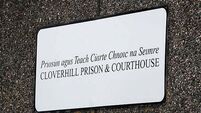Ireland’s suicide rate stable - But one death is one too many

There were 486 confirmed suicides in Ireland in 2014, compared to 487 in 2013. Provisional data for 2015 and 2016 suggests a decreasing trend. There were 399 suicides last year, compared with 451 in 2015 and 554 in 2011, according to provisional figures.
Those figures may be greeted as good news by statisticians, but one suicide is still one too many and behind the headline figures lies the heartache for families and loved-ones.
















